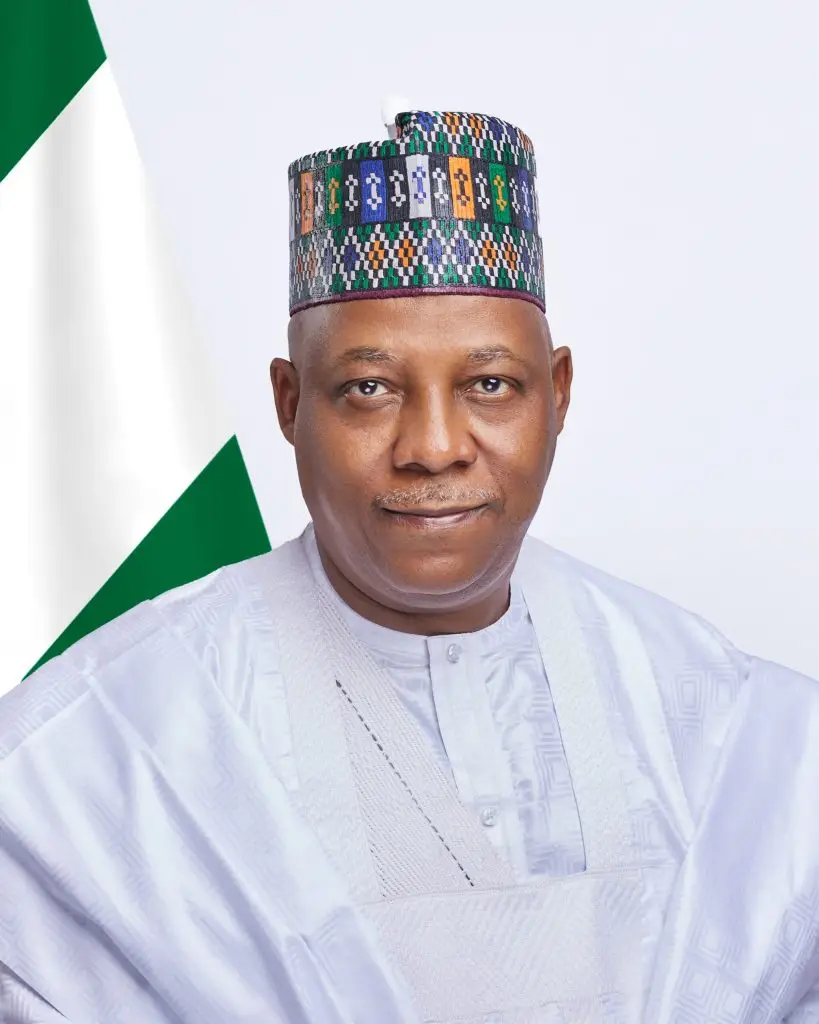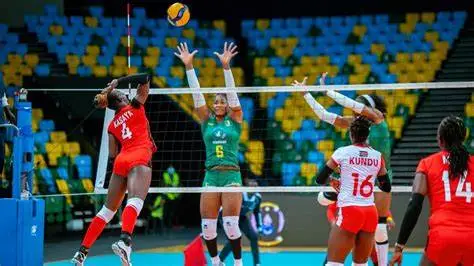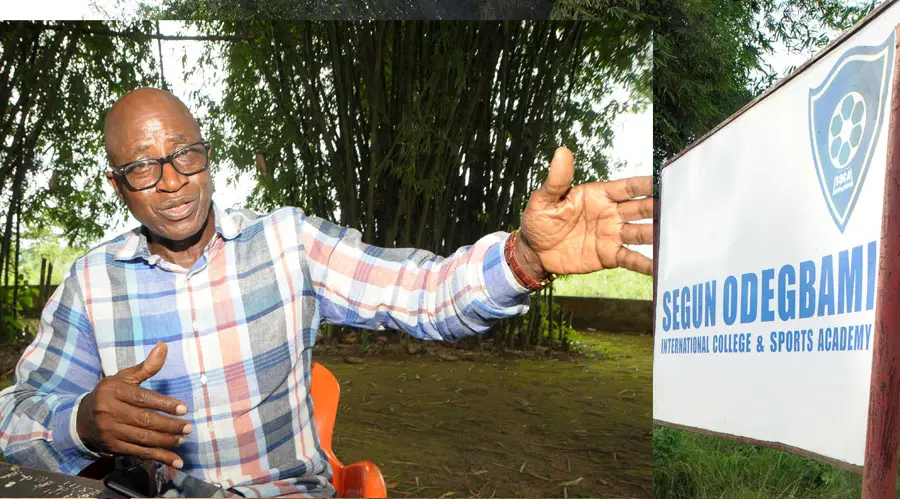It is very hard to find anything to write about that are physically and spiritually uplifting since the global cessation of all sports-related activities. Every subject matter is drowned by the unprecedented fear, panic, desperation, public unrest in many parts, hunger, disease and even deaths, related or unrelated to the dreaded scourge of humanity – the Covid-19 virus – that pervades the entire planet.
I keep my own spirit lifted by recalling Late Nelson Mandela’s words cast on marble: ‘Sport has the power to change the world’. I use them as fuel for my spirit, constantly tasking my creativity to find something, anything, that will reduce the psychological effect of this unwanted pandemic. With sport rendered impotent, I go back to history to drink from the well of nostalgia, from the great deeds of sporting heroes of the past who illuminated our lives with virtuoso performances that have kept the flame of hope alive that we shall overcome and become a great global Black nation one day when we put our acts together. Sport is that constant reminder of who we are, and what we are capable of achieving as a country and as a people. We have the greatest resource of all to achieve these – humans with abundant capacity.
Today, I want to take a sip from my experience of 17 years ago, when, as one of some 35,000 spectators in the terraces of the National Stadium in Surulere, Lagos, I watched a young Nigerian football player, only 19 years old at the time, ignite the fire of a whole new generation and provided the last missing jigsaw in a team that Clemens Westerhof had been putting together for almost 4 years.
I am not so sure that every Nigerian saw what I saw on that day, but it remains etched on my mind. I believe that day was the real beginning of an unprecedented era in Nigeria’s football history. True, what happened on that date was a collective team work, an all-round fantastic performance with all the players at their best, but one star shone brighter than the others in the constellation.
It was July 24, 1993.
I remember that day like yesterday. It was an African Cup of Nations qualifying match against the Walias of Ethiopia. The Super Eagles won very easily, a high scoring 6-0 victory. What caught the eye particularly on that day, was this prodigious young player who was making his debut appearance for the Green Eagles. For 90 minutes he gave a virtuoso performance. On that day the search for a worthy successor for the ‘irreplaceable’ Mudashiru Babatunde Tiamiyu Lawal at the defensive midfield position, Number 4, ended.
That Clemens Westerhof gave a debutant the opportunity to start in a position that was one of the most technical in any team, that required special traits and talents, meant that the player must be good. Nigeria had a well-established tradition of excellent defensive midfield players – strong, skillful, great passing ability, great tackling skills, a good vision, good passes and critical transition skills of linking attack and defense. Even today, as one goes through the list of those that have played that position, a picture emerges of the quality that has always been needed to play in that position. Let’s start from the present and go backwards.
Today, that position is held by a player considered to be one of the very best in the English Premiership, and touted to be a contestant for the best in Europe – Wilfred Ndidi.
Before Ndidi, for several years, there was John Mikel Obi, a world class defensive midfielder converted to that role by the ‘Special One’, Jose Mourinho. There was also Ogenyi Onazi who held his own until an injury sidelined him.
Before them, way back into the history of defensive midfield play, were exceptionally gifted players that included Sani Mohammed, Nwabueze Nwankwo, Mudashiru Lawal, Christian Madu, Ademola Adesina, Paul Okoku, Mutiu Adepoju, all truly terrific players.
To be given that shirt could only have meant one thing – that Sunday Ogochukwu Oliseh was really good.
On that fateful day, I watched a performance such as I had not seen before then, nor probably since. If near perfection was possible in football, that was it. Oliseh hardly put a foot wrong on his debut for Nigeria. He put up what must go down as a masterclass on defensive midfield play. His every touch and move were flawless. He tackled intelligently and cleanly. He shielded the ball effectively when in possession. He did not hold on to the ball unnecessarily, releasing it quickly and with deadly precision. He delivered short and long passes with both feet. He had an effective dribble and shot well from a distance. His transition with the ball from defense to attack was slick and a beauty to watch. After his limited forays upfront, he returned quickly to be in the first line of defense when the team lost possession.
Was he playing from instinct or following the coach’s instruction? Either way, it was a perfect interpretation.
The greatest beneficiary of his immaculate display was marksman, Rashidi Yekini, who was in his full element on the day, capitalising on the brilliant passes lofted from Oliseh’s feet as if measured with a tape, and delivered safely onto his running path behind the Ethiopian defenders that did not know what hit them, until they had produced 3 of the 6 un-answered goals that were scored on that day.
The whole team played very well on that day, and Oliseh’s contribution to the overall performance was huge. He shone like a million stars.
For most of the years after that day Oliseh owned that position until 2002 when he was unceremoniously dropped by Coach Adegboye Onigbinde on the eve of the Korea/Japan World Cup for reasons unconnected to his consistent good performances.
Sunday Oliseh was in a class of his own as a defensive midfield player.
It took the calibre of a world class player like Mikel Obi, 4 years later, to fully wear Oliseh’s shoes.
Mutiu Adepoju, a fantastic player of the same era, a very solid defensive midfield player as well, who could actually do more damage going forward with his shots or head than Oliseh, had to be given an alternative position for him to find a place in the Eagles.
Sunday Oliseh did not have the quantum of Muda Lawal’s or Sani Mohammed’s tireless running, or Paul Okoku’sdeft and exquisite touches on the ball, or Demola Adesina’s drive from defense to attack, or even Mutiu Adepoju’s goal scoring instincts, but he had a combination of a little of all of these qualities plus an abundance of his own – tackling skills, defense-splitting passes with both feet across any distances, a superb organizational ability, a vision of where every team mate was, and the most accurate of short and long passes delivered with deadly timing and precision.
At the end of that match in 1993, my conclusion was that a tape of Sunday Oliseh’s performance on that day needed to be produced and distributed to all football schools and academies worldwide, for a perfect demonstration of the art of defensive midfield play.
It was indeed a masterclass.
Sunday Oliseh went on to hold on to that position for 9 years, through all of his career during the most glorious years of the Green Eagles, and, later, the Super Eagles.









Latest Comments